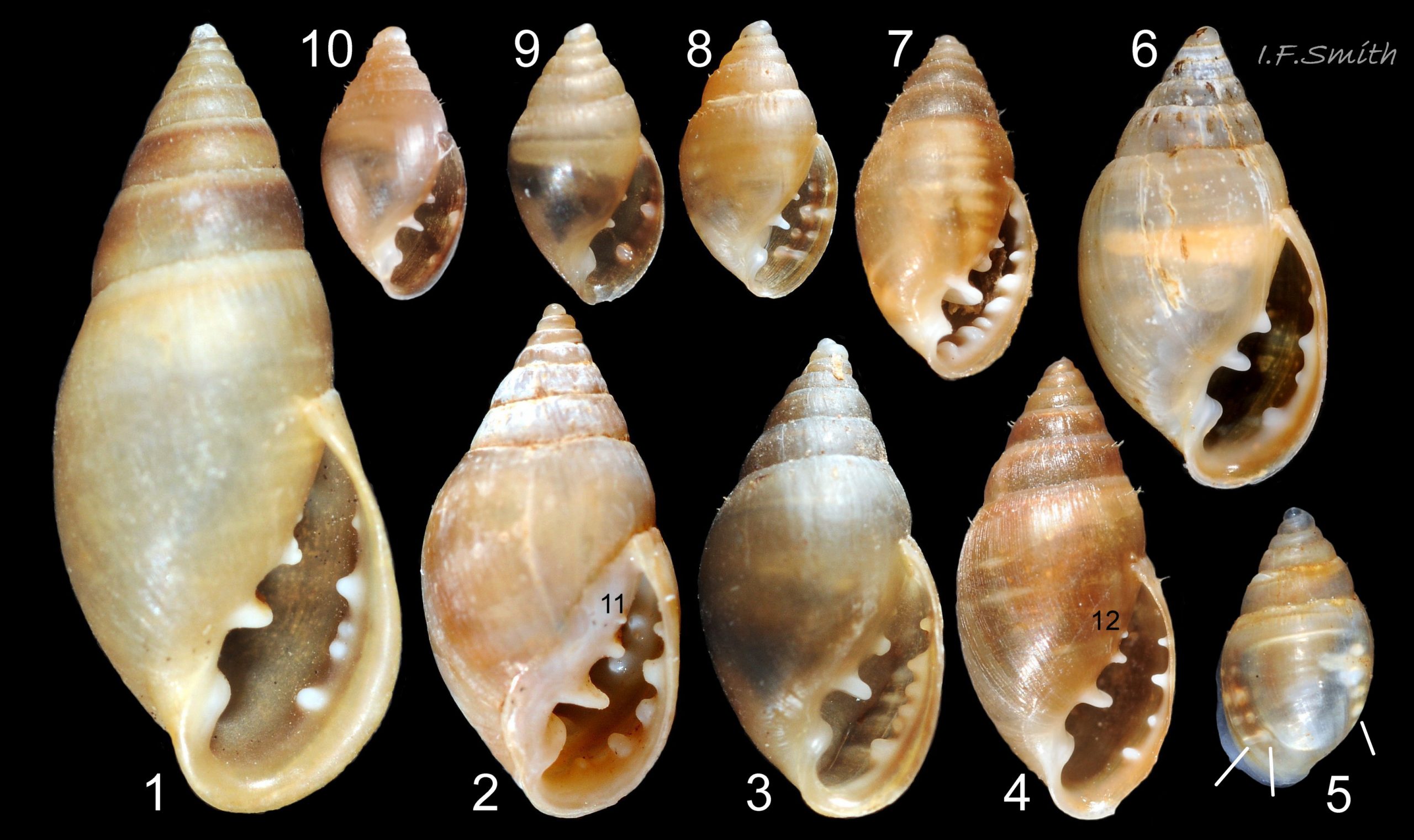All at same scale, largest 10 mm high.
Exterior colour varies from yellowish brown to brown.
All have more than one denticle on the palatal (outer) lip.
1: Caker Point, Cloghan, S. Kerry, Ireland. Leg. A.W. Stelfox. June 1948. 10mm high; unusually large for the species.
2 & 6: Menai Strait, Wales. Under stones at EHWS, sheltered, full salinity, no vascular saltmarsh plants.
All others from by tidal River Dee under stones or driftwood at EHWS, low salinity, on Puccinellia maritima sward close to sandstone cliff. In company with M. myosotis and Assiminea grayana and some terrestrial invertebrates.
5: abapertural view of live specimen in water (more translucent than when dry). Lines indicate palatal protrusions visible through shell from exterior; double row of 4 near rim and single row of 4 far back in the aperture marking a previous lip position.
Juvenile shell usually less than 6 mm high, but adult shells also often less than 6mm. Usual maximum 7.5 mm, exceptionally 10 mm.
Aperture 50% to 60% of shell height, juveniles usually nearer the higher limit; shaped like a narrow ear with a rounded base and a sharp adapical angle.
Thin palatal (outer) lip on specimens over 3mm high has two to seven (or more) protrusions (folds/teeth/denticles) which may be set into a pale calcareous ridge within the aperture near the palatal rim. Further sets of protrusions are often present further back in the aperture, marking previous positions of palatal lip.
The parietal lip consists of a wide glazed area (11) on the body whorl, but is often difficult to discern (12).
Columellar/parietal (inner ) lip has three or four apertural protrusions.

